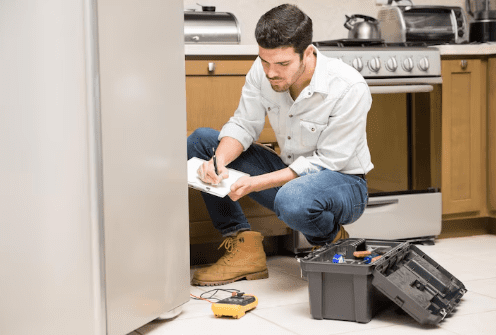How to Replace a Refrigerator Compressor Safely

Replacing a refrigerator compressor is one of the more complex repair tasks homeowners may encounter, but with patience, careful preparation, and attention to detail, it can be accomplished safely. The compressor is the heart of the cooling system, responsible for circulating refrigerant and ensuring the appliance maintains proper temperature. When the compressor fails, the refrigerator loses its ability to cool effectively, often leading to spoiled food and wasted energy. We will explore a step-by-step approach to replacing a refrigerator compressor safely, covering essential preparation, careful removal, and secure installation so that you can restore your refrigerator’s function without compromising safety.
- Preparing the Work Area and Gathering Tools
Before beginning the process, it is important to prepare the work area to ensure both safety and efficiency. Start by unplugging the refrigerator from the power source to eliminate any risk of electrical shock. It is also helpful to move the appliance away from the wall, giving you clear access to the back panel where the compressor is located. You should gather necessary tools, including wrenches, screwdrivers, a soldering kit, a refrigerant recovery machine, protective gloves, and safety goggles.
If you are missing certain items, you can easily find many replacement tools and refrigerator parts online, making it more convenient to have everything ready before starting. Refrigerant handling requires extra care, so a certified recovery system is vital to avoid environmental harm and personal injury. A clean, well-lit workspace not only makes the process smoother but also reduces the risk of accidents or mistakes. Taking the time to prepare your tools and space before beginning ensures the entire procedure is safer and less stressful.
- Identifying the Signs of Compressor Failure
Replacing a compressor should not be the first step when your refrigerator experiences problems. It is crucial to identify whether the compressor is truly the faulty component. Signs of compressor failure include a refrigerator that runs but does not cool, unusual clicking or buzzing noises, or the compressor becoming excessively hot to the touch. In some cases, the problem may stem from a start relay, capacitor, or another smaller component that can be easily replaced. Carefully inspecting the appliance and confirming the diagnosis can prevent unnecessary work and expense. Testing with a multimeter and checking refrigerant pressure can provide clearer answers. By ensuring that the compressor is indeed the root cause of the problem, you can approach the replacement process with confidence and avoid replacing parts that are still functional.
- Recovering the Refrigerant Safely
Refrigerant is a chemical substance that should never be released directly into the atmosphere due to its environmental impact. To safely recover it, you will need to use a refrigerant recovery machine designed for this task. Begin by attaching the machine to the service valve and carefully transferring the refrigerant into an approved recovery cylinder. This process requires patience, as rushing can cause leaks or spills. Always wear protective gloves and goggles when handling refrigerant to prevent contact injuries, such as frostbite or eye irritation. It is also wise to conduct this step in a well-ventilated area to minimize any accidental exposure. Once the refrigerant has been safely collected, seal the cylinder tightly and label it according to safety guidelines. Proper refrigerant recovery is not only a matter of safety but also compliance with environmental regulations, making this a non-negotiable part of compressor replacement.
- Removing the Old Compressor
After refrigerant recovery, you can move forward with disconnecting and removing the old compressor. Start by removing the back panel of the refrigerator to expose the compressor unit. Take note of how the electrical connections and refrigerant lines are arranged, as you will need to reconnect them in the same order during installation. A good method is to take clear photos or label each connection as you go. Disconnect the electrical wiring first, followed by the suction and discharge lines using a wrench or tubing cutter. If the connections are soldered, use a soldering kit to carefully detach the tubing without damaging surrounding components. Once everything is disconnected, gently lift the old compressor out of its mounting base. Because compressors can be heavy, use caution and consider having someone assist you with lifting. Proper removal ensures the new compressor can be installed without interference or risk of leaks.
- Installing the New Compressor Correctly
Installing the new compressor requires the same careful attention as removal, but with added focus on creating secure and leak-free connections. Place the new compressor onto the mounting base and align it properly before tightening the bolts. Reconnect the suction and discharge lines, ensuring they are clean and free of debris before soldering or sealing them. A poor seal can cause refrigerant leaks, compromising cooling efficiency and potentially damaging the new compressor. After securing the refrigerant lines, reconnect the electrical wiring exactly as it was before, following any labels or photos you prepared during the removal process. Double-check each connection to confirm accuracy and stability. Once everything is secured, you can proceed with replacing the back panel, but leave the system open until refrigerant is reintroduced. This step requires patience, as skipping checks can lead to issues that may require repeating the process.
Replacing a refrigerator compressor safely requires patience, preparation, and adherence to correct procedures. From preparing your tools and recovering refrigerant to carefully removing the old unit and installing the new one, each step plays a critical role in ensuring both safety and effectiveness. While the process may seem complex, approaching it with focus and care can save you from the inconvenience of a malfunctioning refrigerator. By following each stage attentively, you can restore reliable cooling, protect your investment, and maintain the safe operation of your home appliance.





